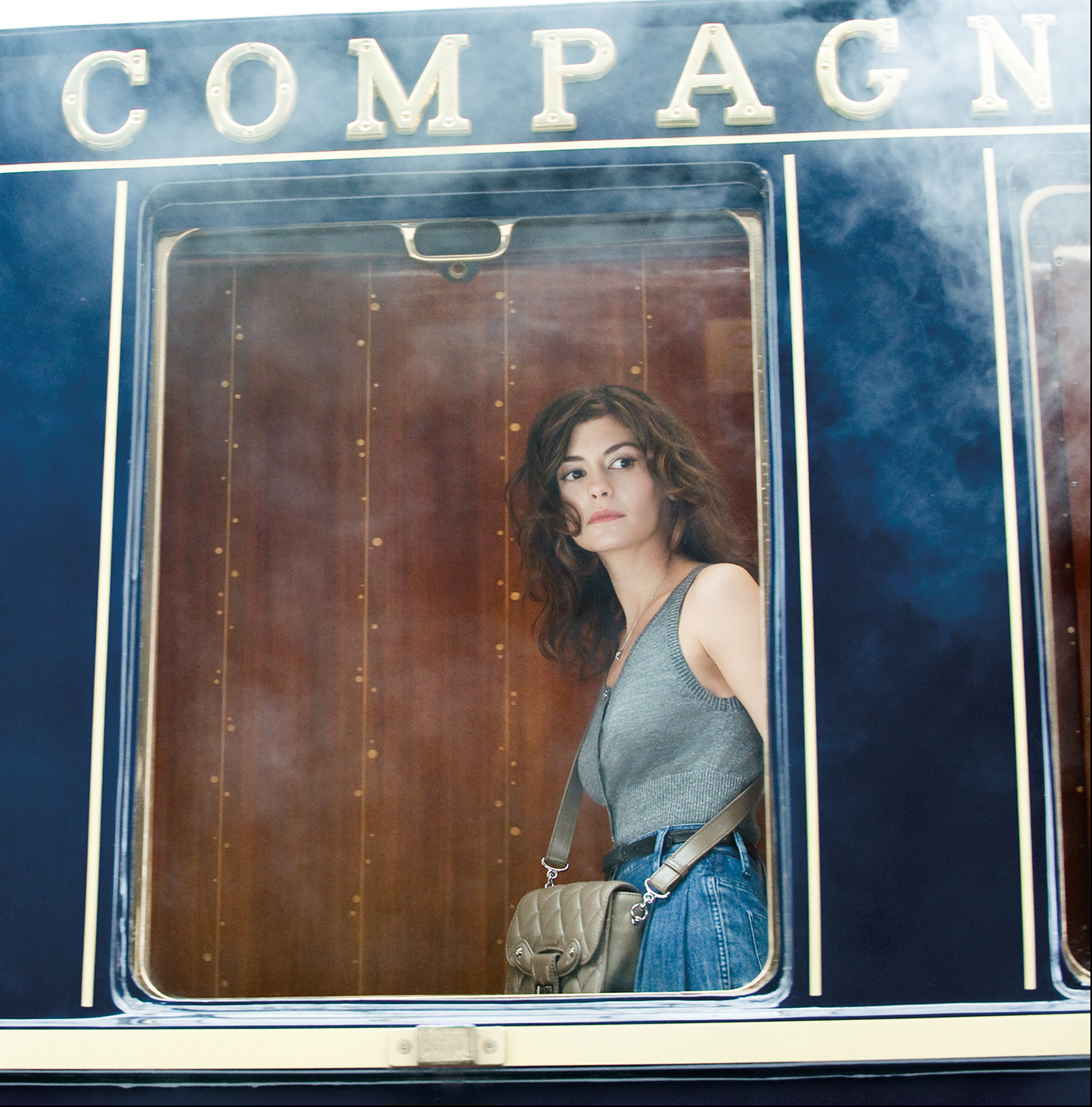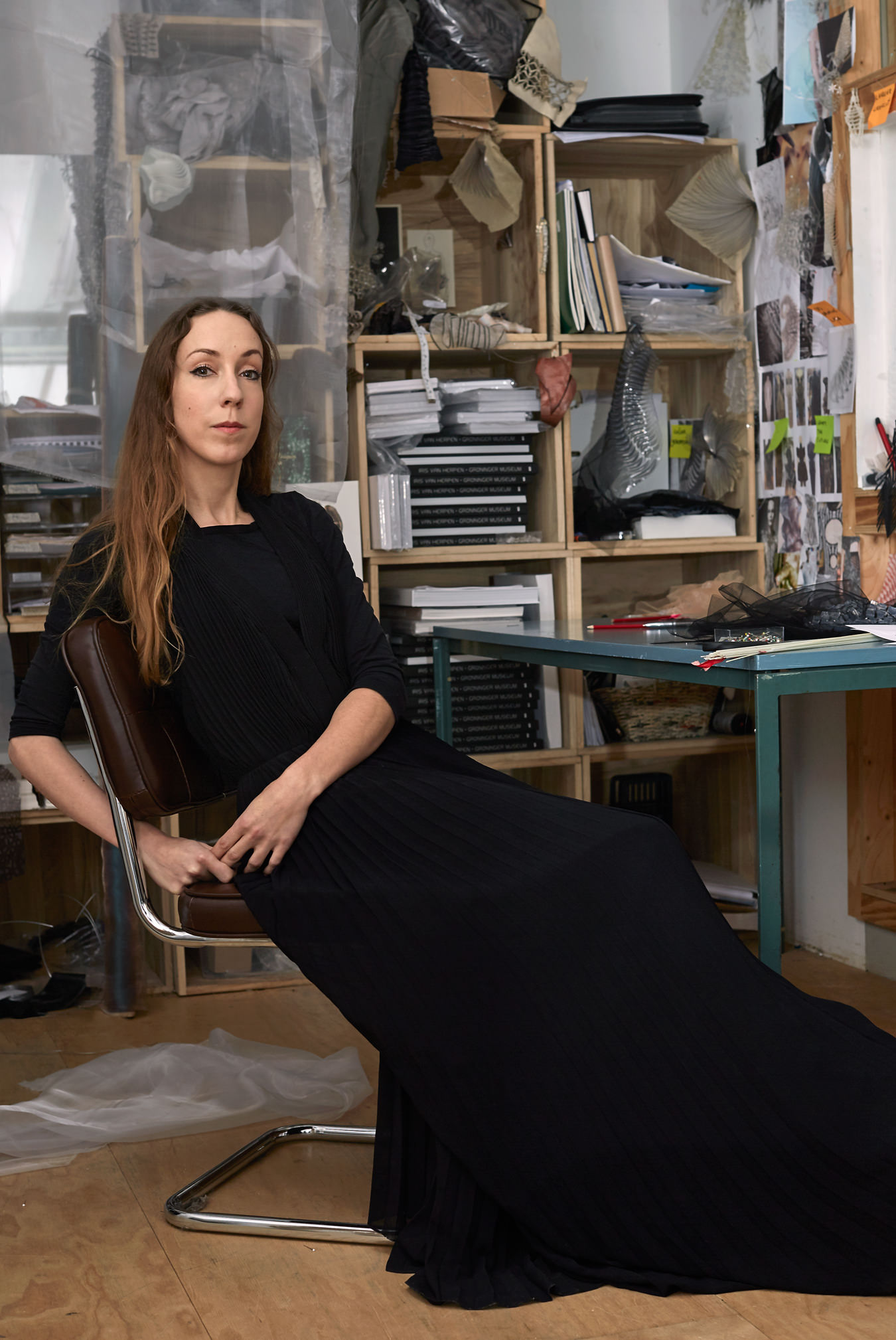-
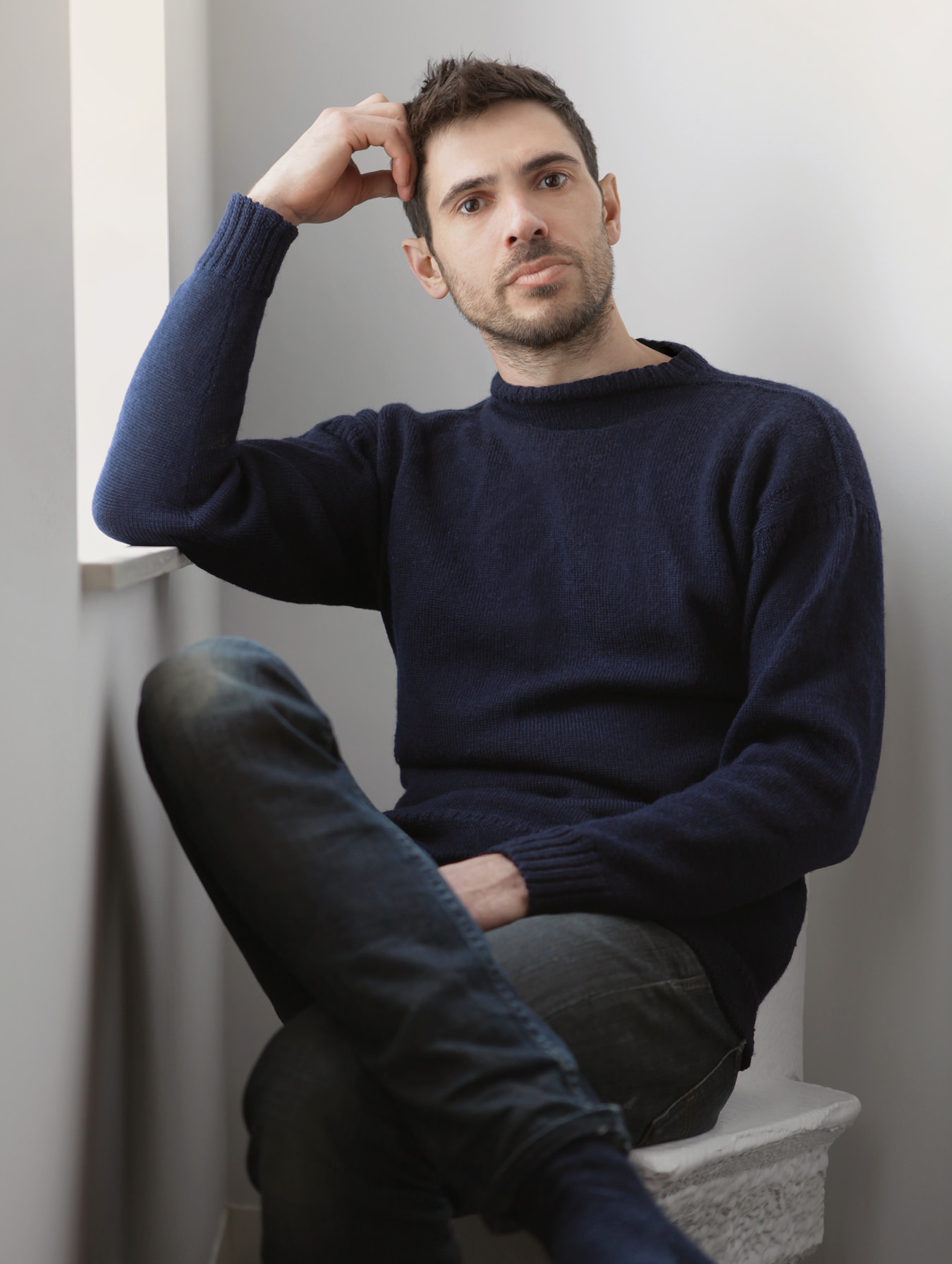
Photo by Nuria Rius.
-
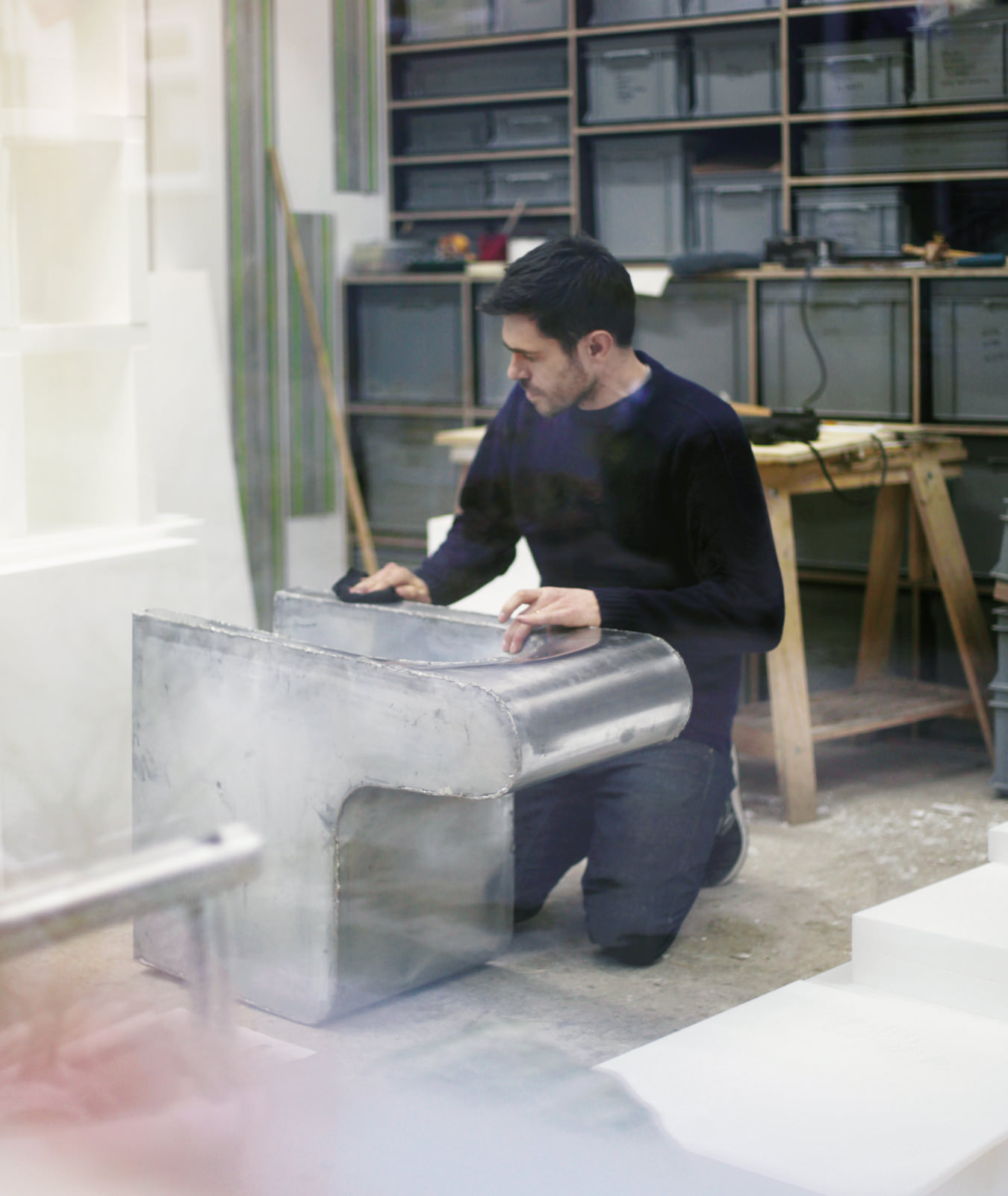
Photo by Nuria Rius.
-
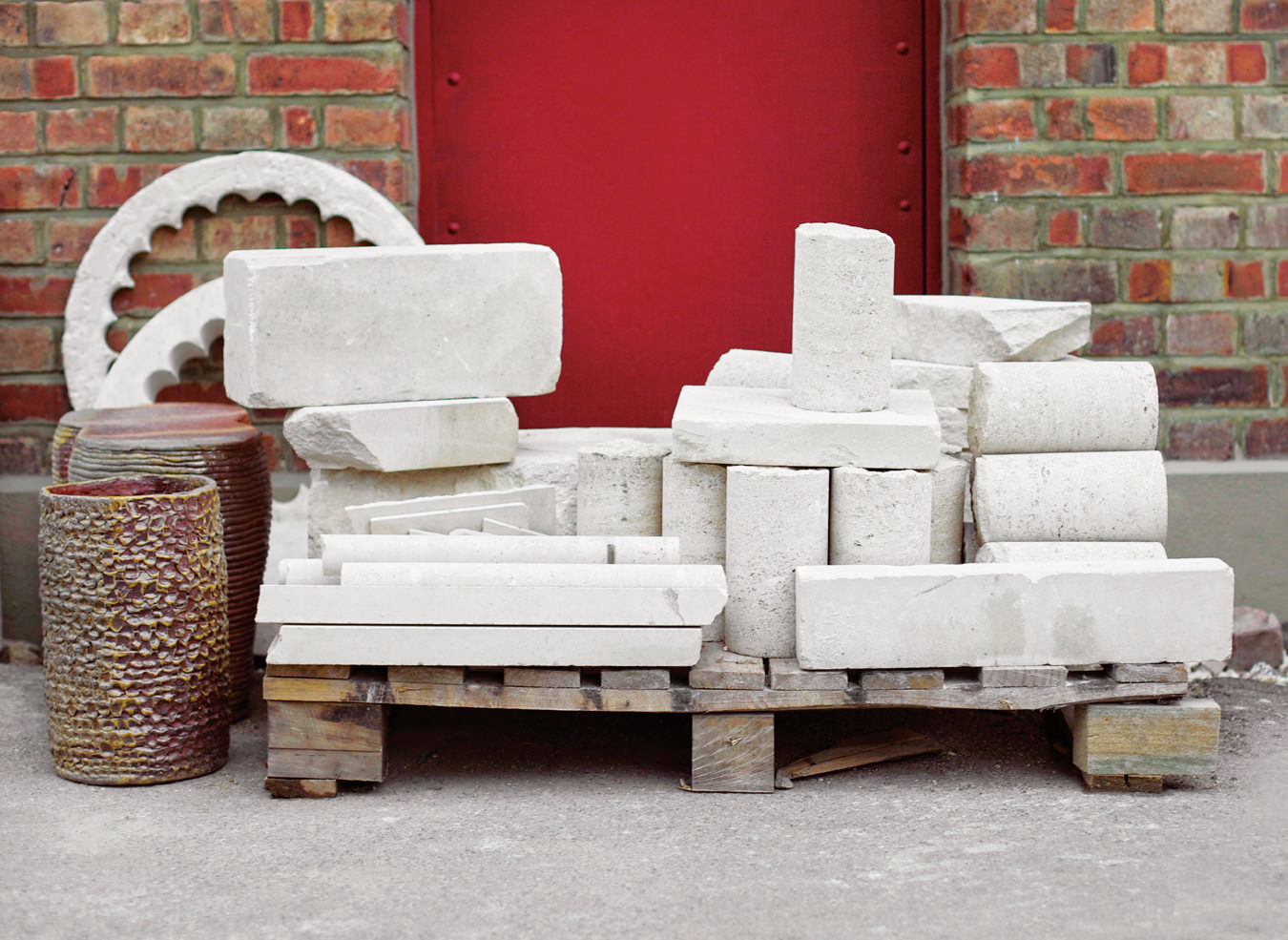
Max Lamb’s North London workshop-studio. Photo by Nuria Rius.
-
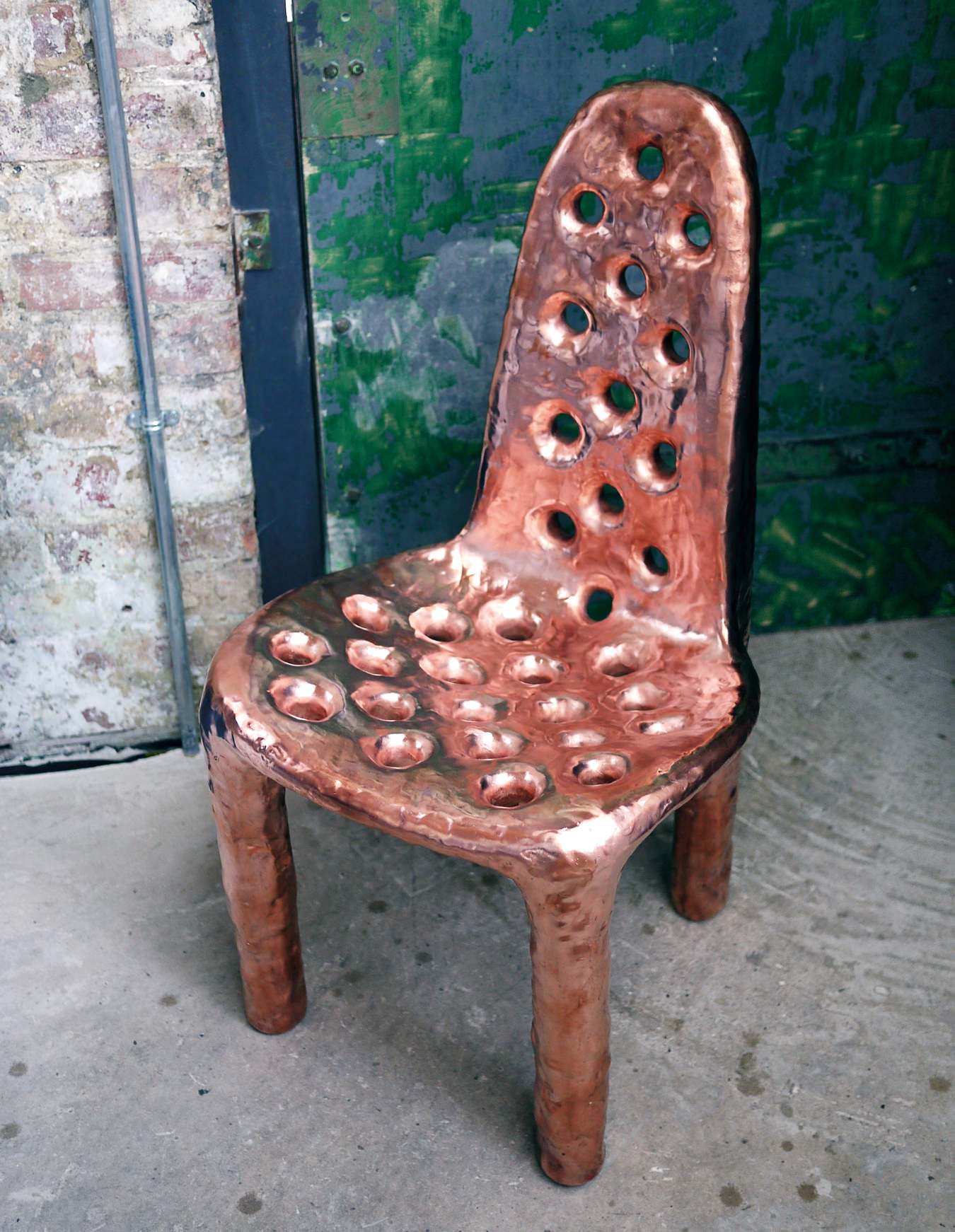
Nanocrystalline Copper Chair. Photo courtesy of Max Lamb.
-
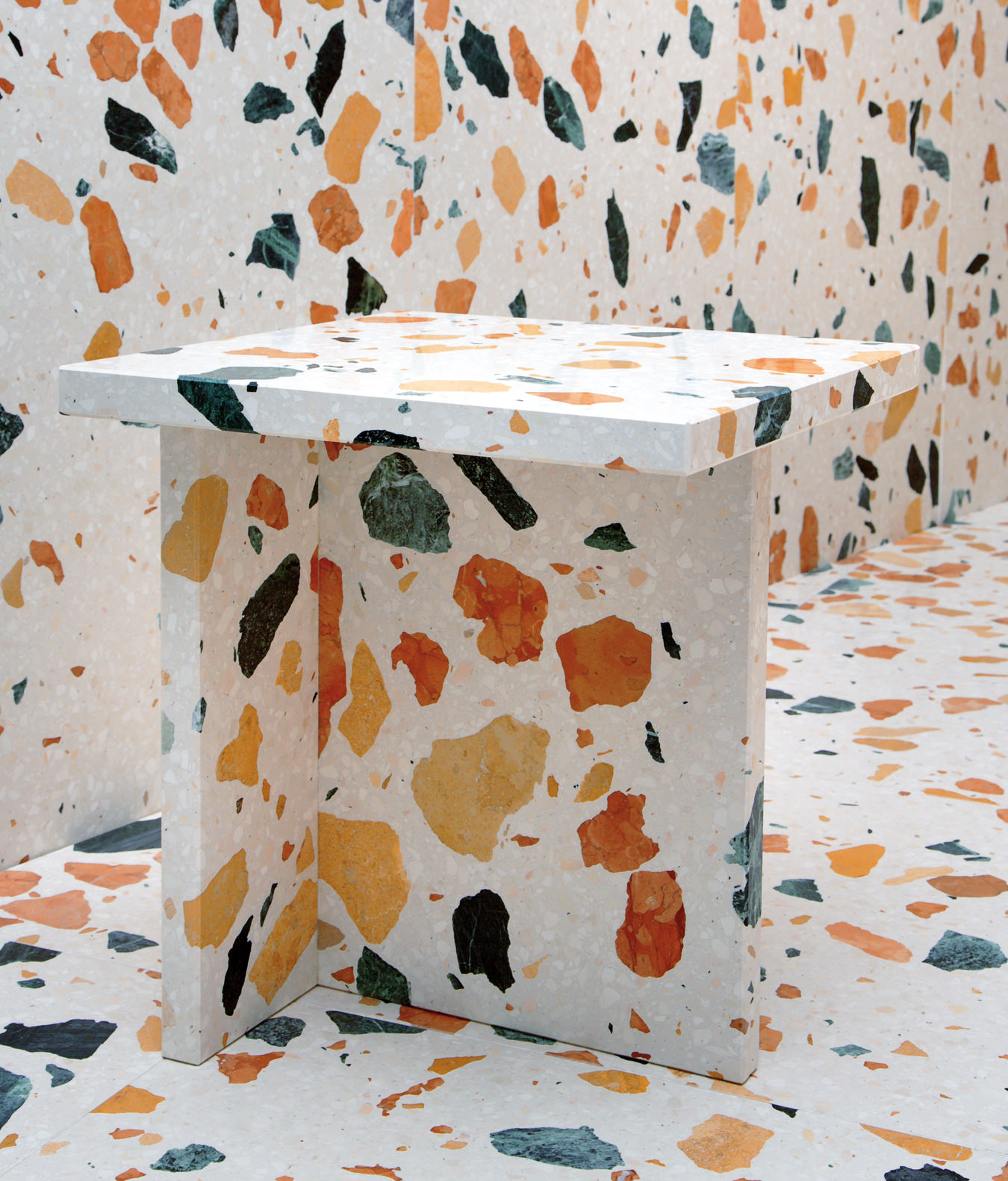
Marmoreal Table. Photo courtesy of Max Lamb.
-
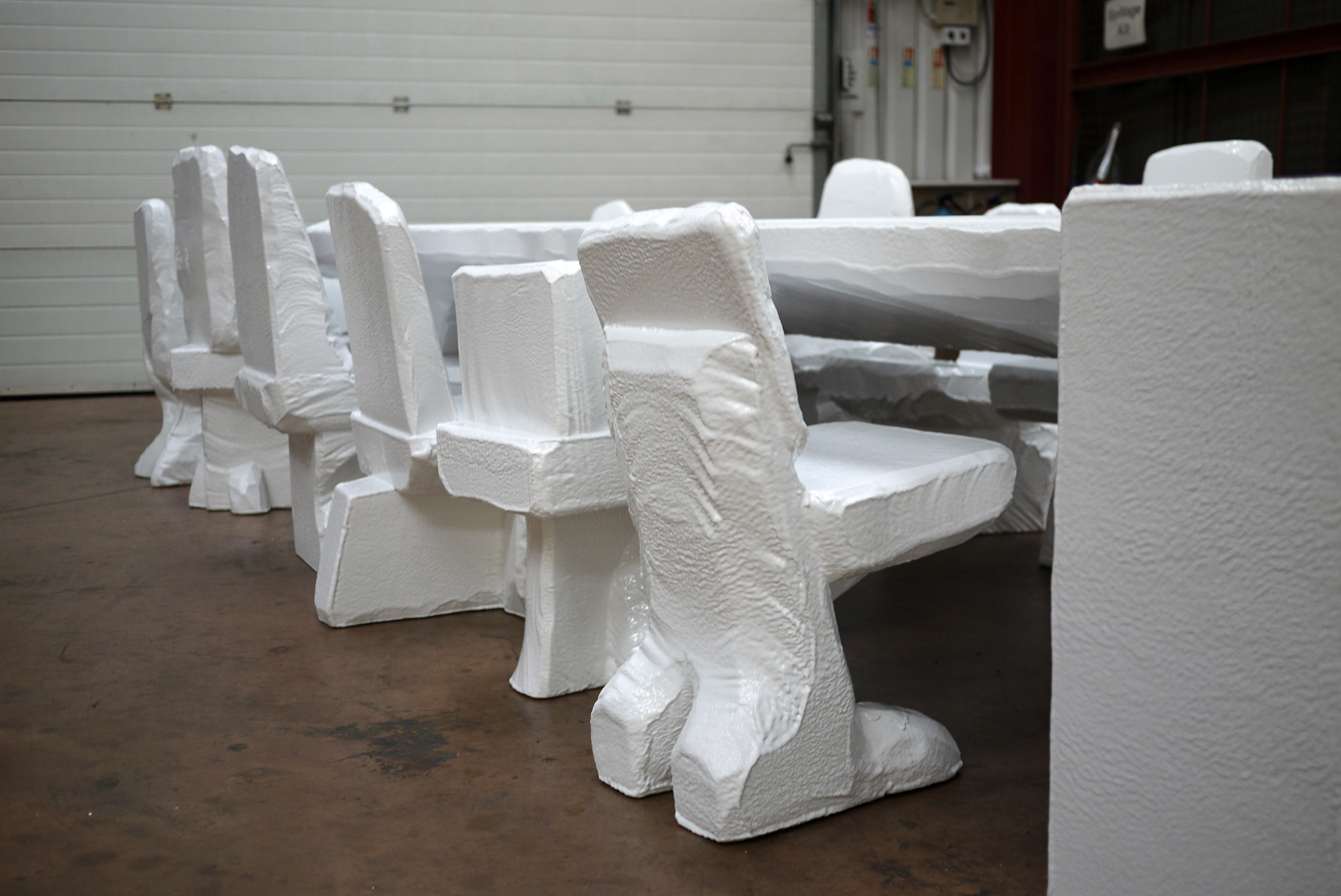
XL Poly Table and Scrap Poly Chairs (2011). Carved expanded polystyrene and polyurethane rubber.
-
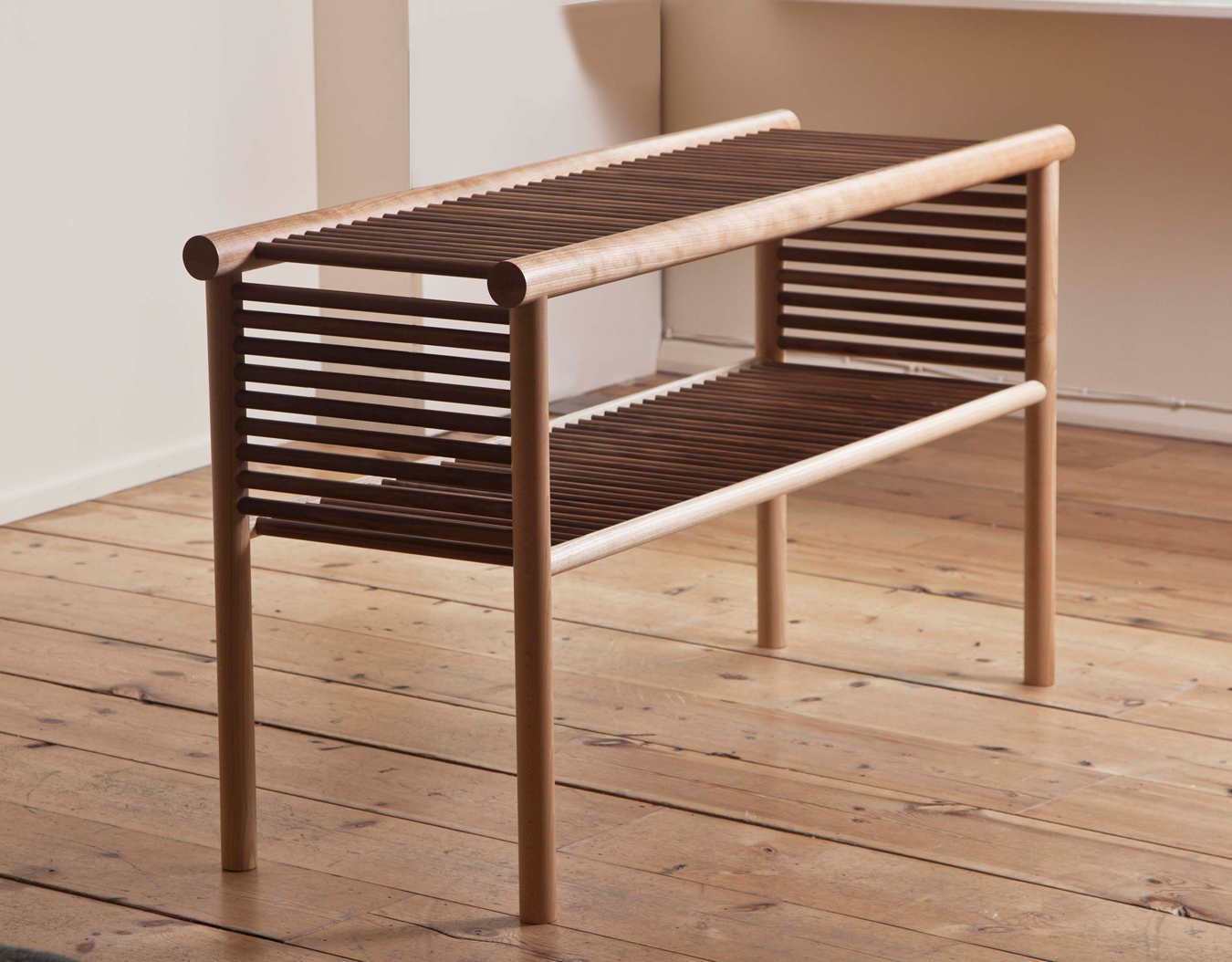
Woodware console table (2011). Walnut, ash, beech, cherry.
-
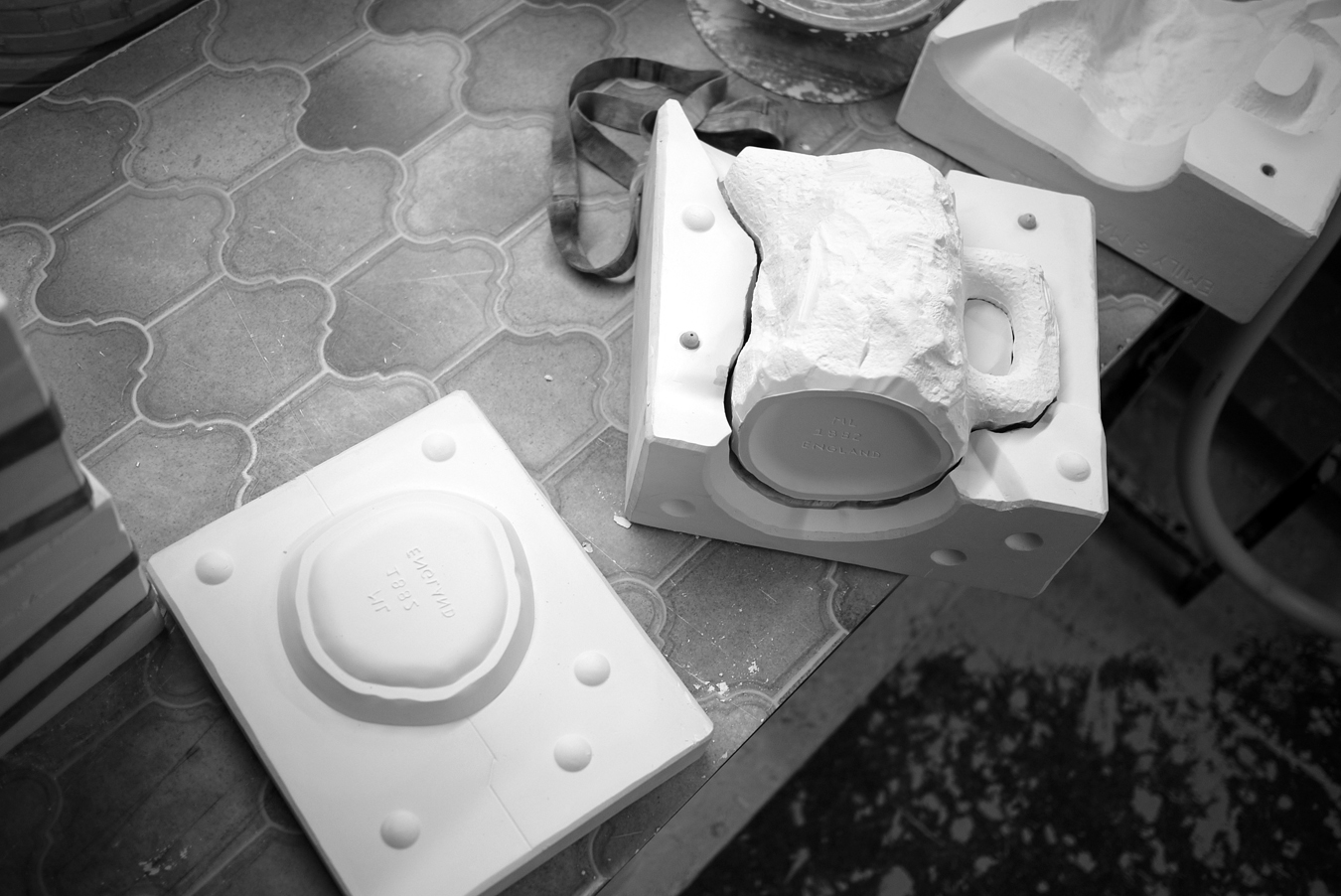
Crockery jug (2012) for 1882 Ltd. Fine bone china. Being removed from the mould in the factory in Stoke on Trent, England.
-

Sitting in living room on Blob Poly Chair (2013). Carved expanded polystyrene and polyurethane rubber. Photo by Nuria Rius.
-
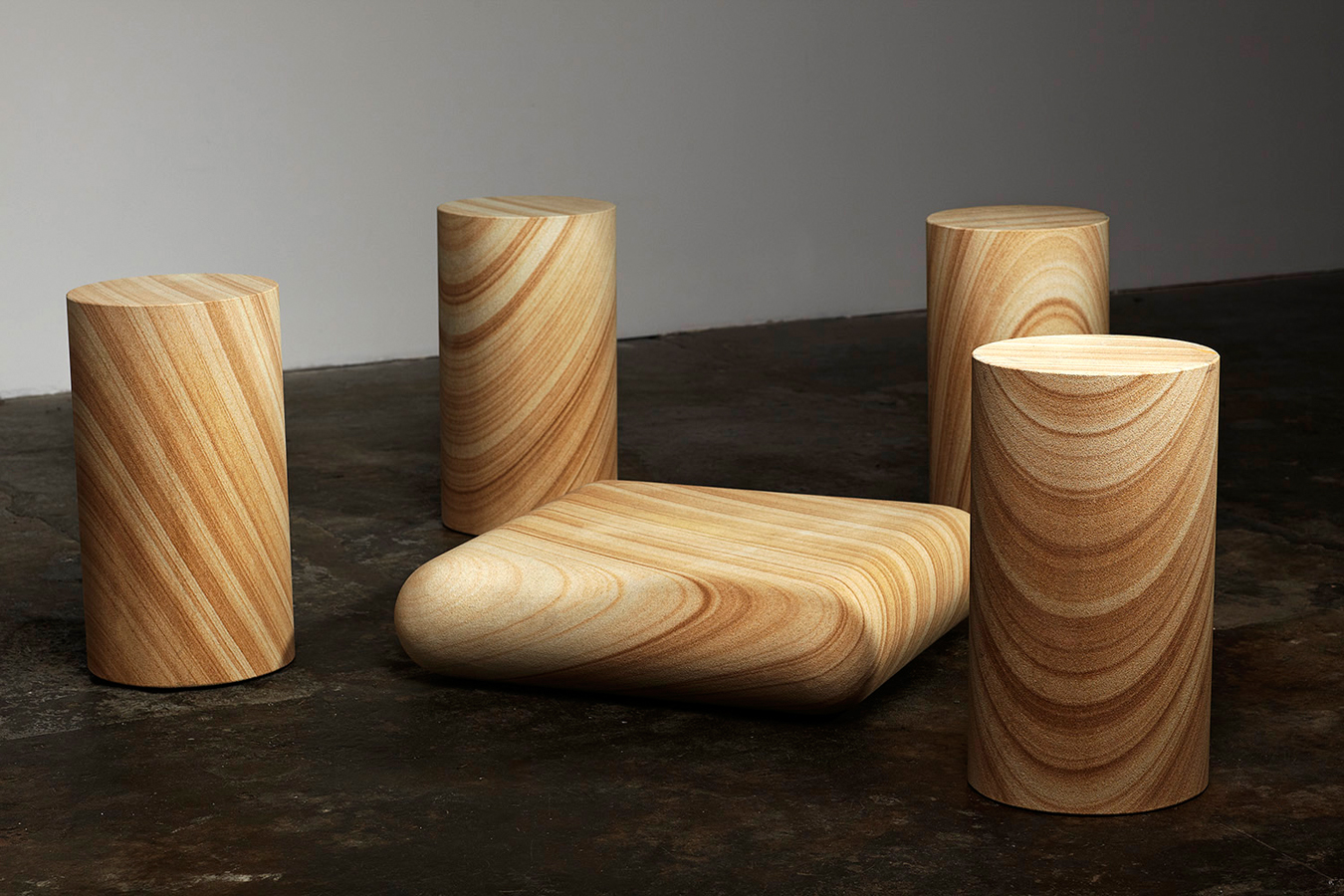
Hawkesbury Sandstone Collection (2011).
-

Scrap Poly Pastel Rainbow Bench (2014). Installation view of “Luke Gottelier & Max lamb” at Kate MacGarry Gallery, London. Painting by Luke Gottelier.
-

Opening Ceremony, Shoreditch, London store interior by Max Lamb. Latex rubber curtains, painted steel tubing, rubber plinths and a steel ladder.
Max Lamb
Achieving the Max.

Walking into Max Lamb’s studio in North London, England, the first visible item is a seat hewn from the trunk of a tree. It is classic Lamb: raw, powerful, uncompromising, and yet deceptively simple. This is, after all, a designer who first came to international attention through his subtle reworking of natural materials such as copper, pewter, and granite—the latter gathered from the Cornish moors that surround his childhood home.
In fact, this tree, a 187-year-old ash, originally grew on the 80-hectare farm in North Yorkshire owned by Lamb’s grandfather. It was felled in 2009 when it was feared it might topple onto the roof of the farmhouse. Lamb knew before the tree had even come down that he wanted to use the trunk to make a series of seats: 131 of them in fact. It has taken him six years to bring the project to fruition, returning to it over the years when his other commitments, residencies, and projects around the world allowed. This autumn, the 131 pieces will be shown at Gallery Fumi as part of the London Design Festival under the title My Grandfather’s Tree. “My grandfather has been a massive inspiration to me,” says Lamb. “I spent a lot of my childhood helping out on the farm during my school holidays. He is about to turn 90 but still going strong and driving the tractor. I learned from him the need to be multiadaptable; anyone who runs a small-scale farm in England understands the need for diversification. He is also stubborn as hell, which is where I get my obstinacy from.”

Max Lamb’s North London workshop-studio. Photo by Nuria Rius.
Lamb’s North London home consists of a workshop-studio on the ground floor and bijou living accommodation above, which the 34-year-old shares with his wife, Gemma Holt. Where Lamb is fizzing with nervous energy and barely suppressed impatience, Holt is calm, collected, and quietly spoken. Her surname actually means “small grove of trees”, which sounds particularly apt given their dynamic and Lamb’s love of the material. Lamb is a self-confessed fidget; his progress from a sports-mad little boy to an industrial designer of international renown is in line with his persona, and his energy to do more and more appears vast.
So how would Lamb describe his work to someone yet unfamiliar with his chainsawed trees or carved polystyrene that he transforms into furniture and household artifacts that are highly crafted and yet paradoxically barely altered? “It is about how little can I do to a material and yet change it to the point you know exactly what it does and how to use it—simple interventions that reveal the suggestion of a function. My designs can be really labour intensive, yet there is an economy to them that is all about collaborating with a given material and giving it a voice. I like to think I allow a material to keep its identity, whether it is polystyrene, wood, stone, or metal, however subjective that might be.”
Industrial designer Max Lamb creates one-of-a-kind furniture that reveals the integrity and voice of raw materials.
Lamb’s workshop-based practice revolves around the notion of exploring materials and processes to create products with real integrity and soul. Rather than produce designs for mass production, which often transfer directly from the computer screen to machine manufacture with no human intervention, he instead focuses on the unique and the limited. It is Lamb himself—not a team of assistants—who chisels, carves, smelts, and casts a palette of mainly natural materials into rugged, bold, and visually arresting forms that are both functional and sculptural. While best described as a furniture designer—seating is a particular love of his—Lamb produces work that is about as far as it is possible to be from the ubiquity of the average shopping mall. When he takes a piece of wood, stone, metal, or even plastic, he uses his hands and his eyes—just as a medieval craftsperson would have done—to transform it into something that is far more than mere furniture. Having said that, he has produced quite a range of work to date, including chairs, stools, tables, and daybeds, which are routinely snapped up by collectors the moment they are unveiled at international fairs such as Design Miami at Art Basel and PAD (both Paris and London).

Nanocrystalline Copper Chair. Photo courtesy of Max Lamb.
Lamb’s family and background have subliminally informed much of his work. With a father in the Royal Air Force, Lamb grew up used to moving house and school on a regular basis—some of it happily and some of it less so. However, the cornerstone of family life was the home in St. Austell, Cornwall, that his parents bought when Lamb and his elder sister, Hannah, were young and where they still live today. Cornwall—at the very tip of southern England, surrounded on three sides by ocean—was an idyllic place for a sporty, hyperactive boy to spend much of his childhood. Lamb’s father was both a physical education and ground school training officer with the RAF, so the family enjoyed an active, outdoorsy life walking on the moors, swimming, surfing, and biking. “There are pictures of me on Caerhays Beach at just two days old,” says Lamb, “and then again in 2006 when I was casting Pewter Stool on the sand there. We were a nomadic family, but Cornwall was our bolt-hole—the place to which we always returned.”
Although good at art, for most of his school life Lamb thought he would eventually go into something sport or science related—like sports physiotherapy. However, a particularly inspiring group of teachers during his secondary education led him to change direction and embark on an art and design foundation course. From here, he went to Northumbria University in Newcastle upon Tyne to study three-dimensional design, and from the beginning was consumed by the practical aspects of making, rather than purely conceptual design. “I have never been very happy sitting down and designing something on paper,” he says. “I always prefer to be in the workshop, using my hands and working out how to make real the thing that is in my head.”

Marmoreal Table. Photo courtesy of Max Lamb.
Never a great one for intensive planning ahead, Lamb hatched a vague idea in his final year to split his time postgraduation between designing products during the summer months and being a snowboard instructor in Fernie, British Columbia, during the winter season. However, fate had other ideas. His graduate show of various furniture pieces, including a family of stools (Mr. Stools), a chair (Chair 1), a bookshelf (Bookend), and a bench (no official name), led directly to a job offer with the interior design studio of Ou Baholyodhin in London. While the snowy wastes of Canada still beckoned, Lamb knew it was too good an opportunity to turn down. He was taken on as a junior designer, but with special responsibility for running his own mini-projects—including designing bespoke furniture for specific interiors commissions.
Meanwhile, hungry for his own success, Lamb used every available slice of time and money to have prototypes of his own designs made that he would then show at commercial exhibitions in London and Birmingham, such as 100% Design and Top Drawer. He remembers this time as “horrible”, not because of the day job but for the loss of control over his work: “I was having to pay for prototypes to be made from my drawings, but all too often they would not be what I had envisaged and be a very long way from being market-ready. Yet this was all I had to present to the public and to buyers from stores such as Heal’s. At some point during that year, I realized I needed more education and more time in the workshop: a lightbulb flashed in my head saying, ‘I have to go to the Royal College of Art.’ ”

The RCA was pivotal in many ways for Lamb—not least because it switched him from designing for mass production, as had been his focus at Northumbria, to the idea of working independently. “I realized I did not have to make prototypes,” he recalls, “because what I was making in the workshop were already products. I could be designer and maker and retailer—a one-man band in effect. At our final-year show in 2006, few of my peers had work to sell—instead they had ideas to sell. I not only had things to sell, but I did sell some of them and that gave me enormous confidence.”
Lamb’s graduate show was called Exercises in Seating, and it included many of the pieces that subsequently helped make his name, including Pewter Stool, Copper Stool, Sheet Steel Chair, and Poly Chair. Looking back, he thinks the title was less about seating and more about the exercises: “It was a conscious decision to explore an extensive range of materials and processes in order to produce objects. However, there needed to be some sort of thread or consistency running through, so I chose to make them all seats: that provided focus and a set of parameters, meaning each piece was easily comparable.”
“How little can I do to a material and yet change it to the point you know exactly what it does and how to use it—simple interventions.”
One of his tutors at the RCA was Tom Dixon, who offered him a job upon graduation as special projects designer. Flatteringly, this was a new job spec in effect handcrafted to match Lamb’s own abilities and enthusiasms. Lamb remembers it with understandable affection: “I was Tom’s outlet for all the creativity he wanted to express that did not match with the Tom Dixon brand and business model—he needed a way to get ideas out of his system, just as I need to get ideas out of my system, so he channelled them through me.” It was also a role that allowed Lamb the opportunity to continue his own channelling. At Design Miami in 2007, Lamb was invited to give a design performance named Sacrifice and Investment, casting furniture in sand with a mobile foundry he made from a gas camping stove, saucepans, and ingots of pewter. Paul Johnson of Johnson Trading Gallery was so impressed by the work he bought two pieces on the spot for the grand sum of £3,500 (about $7,400 Canadian at the time). For Lamb, this was just enough to give him the wherewithal to rent a workshop in North London, so he resigned the day job.

Woodware console table (2011). Walnut, ash, beech, cherry.
Before long he was signed to two international design galleries: Johnson Trading Gallery in New York and Gallery Fumi in London. His first solo show, Max Lamb, was at Johnson Trading Gallery in 2008, and since then he has kept on a steady upward trajectory, attracting the attention of collectors, museums, and galleries around the world. Earlier this year, Lamb returned to Exercises in Seating with a show at Spazio Sanremo during the Milan Salone. Here he showed 40 pieces, seven of which appeared originally in the RCA show. He describes this not so much as a retrospective as a manifesto, saying, “I wanted to show an accumulation of my work, but to put it into a current context. I adopted the same title for a second time, because everything I do is in some way an exercise in itself.”

Scrap Poly Pastel Rainbow Bench (2014). Installation view of “Luke Gottelier & Max lamb” at Kate MacGarry Gallery, London. Painting by Luke Gottelier.
Ironically, sitting is one thing he really hates doing, but he is drawn to seating because of its human scale: “I like the relationship between a seat and the human body—the fact that it even adopts the same terms, such as arm, leg, feet, or back. A seat is very simple in function, but very complex in the many different characters, forms, and ideas it can express.”
Lamb has never steered away from his vision of remaining a one-man band. “My ideas do not stay only in my head for very long—they turn stagnant if they do.” Residencies in China, India, and Nigeria in particular have cemented his fascination with the fast-disappearing hand-skills that used to be prevalent in these regions. While he accepts a certain amount of special projects and consultancies, the majority of his income still comes from designing and making his own unique examples of furniture and lighting. Lamb has two major shows this autumn: My Grandfather’s Tree at Gallery Fumi in London, and Hard Core at Johnson Trading Gallery in New York. The highlight of his own year was the installation of the gates he has designed for his alma mater, the new Royal College of Art buildings in Battersea, London, in March of this year. “That was a wonderful accolade,” he says. “I consider it a huge honour—as prestigious as it comes.”

Opening Ceremony, Shoreditch, London store interior by Max Lamb. Latex rubber curtains, painted steel tubing, rubber plinths and a steel ladder.
Lamb’s rise to design luminary is as much to do with his versatility, sheer determination, and drive as much as innate talent. “The physical world is one big playground; whether I am casting metal on a beach or hewing stone gathered from the moor.” One thing is certain: Lamb’s love of “play” is going to keep him at the forefront of design for many years to come.






